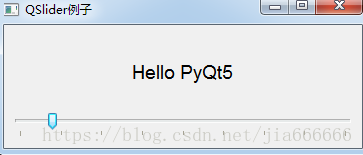SpringBoot+WebSocket+Netty實(shí)現(xiàn)消息推送的示例代碼
上一篇文章講了Netty的理論基礎(chǔ),這一篇講一下Netty在項(xiàng)目中的應(yīng)用場(chǎng)景之一:消息推送功能,可以滿足給所有用戶推送,也可以滿足給指定某一個(gè)用戶推送消息,創(chuàng)建的是SpringBoot項(xiàng)目,后臺(tái)服務(wù)端使用Netty技術(shù),前端頁(yè)面使用WebSocket技術(shù)。
大概實(shí)現(xiàn)思路:
前端使用webSocket與服務(wù)端創(chuàng)建連接的時(shí)候,將用戶ID傳給服務(wù)端 服務(wù)端將用戶ID與channel關(guān)聯(lián)起來(lái)存儲(chǔ),同時(shí)將channel放入到channel組中 如果需要給所有用戶發(fā)送消息,直接執(zhí)行channel組的writeAndFlush()方法 如果需要給指定用戶發(fā)送消息,根據(jù)用戶ID查詢到對(duì)應(yīng)的channel,然后執(zhí)行writeAndFlush()方法 前端獲取到服務(wù)端推送的消息之后,將消息內(nèi)容展示到文本域中下面是具體的代碼實(shí)現(xiàn),基本上每一步操作都配有注釋說(shuō)明,配合注釋看應(yīng)該還是比較容易理解的。
第零步:引入Netty的依賴,和一個(gè)工具包(只用到了json工具,可用其他json工具代替)
<dependency> <groupId>io.netty</groupId> <artifactId>netty-all</artifactId> <version>4.1.33.Final</version></dependency><dependency> <groupId>cn.hutool</groupId> <artifactId>hutool-all</artifactId> <version>5.2.3</version></dependency>
第一步:在NettyConfig中定義一個(gè)channel組,管理所有的channel,再定義一個(gè)map,管理用戶與channel的對(duì)應(yīng)關(guān)系。
package com.sixj.nettypush.config;import io.netty.channel.Channel;import io.netty.channel.group.ChannelGroup;import io.netty.channel.group.DefaultChannelGroup;import io.netty.util.concurrent.GlobalEventExecutor;import java.util.concurrent.ConcurrentHashMap;/** * @author sixiaojie * @date 2020-03-28-15:07 */public class NettyConfig { /** * 定義一個(gè)channel組,管理所有的channel * GlobalEventExecutor.INSTANCE 是全局的事件執(zhí)行器,是一個(gè)單例 */ private static ChannelGroup channelGroup = new DefaultChannelGroup(GlobalEventExecutor.INSTANCE); /** * 存放用戶與Chanel的對(duì)應(yīng)信息,用于給指定用戶發(fā)送消息 */ private static ConcurrentHashMap<String,Channel> userChannelMap = new ConcurrentHashMap<>(); private NettyConfig() {} /** * 獲取channel組 * @return */ public static ChannelGroup getChannelGroup() { return channelGroup; } /** * 獲取用戶channel map * @return */ public static ConcurrentHashMap<String,Channel> getUserChannelMap(){ return userChannelMap; }}
第二步:創(chuàng)建NettyServer,定義兩個(gè)EventLoopGroup,bossGroup輔助客戶端的tcp連接請(qǐng)求, workGroup負(fù)責(zé)與客戶端之前的讀寫(xiě)操作,需要說(shuō)明的是,需要開(kāi)啟一個(gè)新的線程來(lái)執(zhí)行netty server,要不然會(huì)阻塞主線程,到時(shí)候就無(wú)法調(diào)用項(xiàng)目的其他controller接口了。
package com.sixj.nettypush.websocket;import io.netty.bootstrap.ServerBootstrap;import io.netty.channel.ChannelFuture;import io.netty.channel.ChannelInitializer;import io.netty.channel.EventLoopGroup;import io.netty.channel.nio.NioEventLoopGroup;import io.netty.channel.socket.SocketChannel;import io.netty.channel.socket.nio.NioServerSocketChannel;import io.netty.handler.codec.http.HttpObjectAggregator;import io.netty.handler.codec.http.HttpServerCodec;import io.netty.handler.codec.http.websocketx.WebSocketServerProtocolHandler;import io.netty.handler.codec.serialization.ObjectEncoder;import io.netty.handler.stream.ChunkedWriteHandler;import org.slf4j.Logger;import org.slf4j.LoggerFactory;import org.springframework.beans.factory.annotation.Autowired;import org.springframework.beans.factory.annotation.Value;import org.springframework.stereotype.Component;import javax.annotation.PostConstruct;import javax.annotation.PreDestroy;import java.net.InetSocketAddress;/** * @author sixiaojie * @date 2020-03-28-13:44 */@Componentpublic class NettyServer{ private static final Logger log = LoggerFactory.getLogger(NettyServer.class); /** * webSocket協(xié)議名 */ private static final String WEBSOCKET_PROTOCOL = 'WebSocket'; /** * 端口號(hào) */ @Value('${webSocket.netty.port:58080}') private int port; /** * webSocket路徑 */ @Value('${webSocket.netty.path:/webSocket}') private String webSocketPath; @Autowired private WebSocketHandler webSocketHandler; private EventLoopGroup bossGroup; private EventLoopGroup workGroup; /** * 啟動(dòng) * @throws InterruptedException */ private void start() throws InterruptedException { bossGroup = new NioEventLoopGroup(); workGroup = new NioEventLoopGroup(); ServerBootstrap bootstrap = new ServerBootstrap(); // bossGroup輔助客戶端的tcp連接請(qǐng)求, workGroup負(fù)責(zé)與客戶端之前的讀寫(xiě)操作 bootstrap.group(bossGroup,workGroup); // 設(shè)置NIO類(lèi)型的channel bootstrap.channel(NioServerSocketChannel.class); // 設(shè)置監(jiān)聽(tīng)端口 bootstrap.localAddress(new InetSocketAddress(port)); // 連接到達(dá)時(shí)會(huì)創(chuàng)建一個(gè)通道 bootstrap.childHandler(new ChannelInitializer<SocketChannel>() { @Override protected void initChannel(SocketChannel ch) throws Exception {// 流水線管理通道中的處理程序(Handler),用來(lái)處理業(yè)務(wù)// webSocket協(xié)議本身是基于http協(xié)議的,所以這邊也要使用http編解碼器ch.pipeline().addLast(new HttpServerCodec());ch.pipeline().addLast(new ObjectEncoder());// 以塊的方式來(lái)寫(xiě)的處理器ch.pipeline().addLast(new ChunkedWriteHandler());/*說(shuō)明:1、http數(shù)據(jù)在傳輸過(guò)程中是分段的,HttpObjectAggregator可以將多個(gè)段聚合2、這就是為什么,當(dāng)瀏覽器發(fā)送大量數(shù)據(jù)時(shí),就會(huì)發(fā)送多次http請(qǐng)求 */ch.pipeline().addLast(new HttpObjectAggregator(8192));/*說(shuō)明:1、對(duì)應(yīng)webSocket,它的數(shù)據(jù)是以幀(frame)的形式傳遞2、瀏覽器請(qǐng)求時(shí) ws://localhost:58080/xxx 表示請(qǐng)求的uri3、核心功能是將http協(xié)議升級(jí)為ws協(xié)議,保持長(zhǎng)連接*/ch.pipeline().addLast(new WebSocketServerProtocolHandler(webSocketPath, WEBSOCKET_PROTOCOL, true, 65536 * 10));// 自定義的handler,處理業(yè)務(wù)邏輯ch.pipeline().addLast(webSocketHandler); } }); // 配置完成,開(kāi)始綁定server,通過(guò)調(diào)用sync同步方法阻塞直到綁定成功 ChannelFuture channelFuture = bootstrap.bind().sync(); log.info('Server started and listen on:{}',channelFuture.channel().localAddress()); // 對(duì)關(guān)閉通道進(jìn)行監(jiān)聽(tīng) channelFuture.channel().closeFuture().sync(); } /** * 釋放資源 * @throws InterruptedException */ @PreDestroy public void destroy() throws InterruptedException { if(bossGroup != null){ bossGroup.shutdownGracefully().sync(); } if(workGroup != null){ workGroup.shutdownGracefully().sync(); } } @PostConstruct() public void init() { //需要開(kāi)啟一個(gè)新的線程來(lái)執(zhí)行netty server 服務(wù)器 new Thread(() -> { try {start(); } catch (InterruptedException e) {e.printStackTrace(); } }).start(); }}
第三步: 具體實(shí)現(xiàn)業(yè)務(wù)的WebSocketHandler,具體實(shí)現(xiàn)邏輯看注釋
package com.sixj.nettypush.websocket;import cn.hutool.json.JSONObject;import cn.hutool.json.JSONUtil;import com.sixj.nettypush.config.NettyConfig;import io.netty.channel.ChannelHandler;import io.netty.channel.ChannelHandlerContext;import io.netty.channel.SimpleChannelInboundHandler;import io.netty.handler.codec.http.websocketx.TextWebSocketFrame;import io.netty.util.AttributeKey;import org.slf4j.Logger;import org.slf4j.LoggerFactory;import org.springframework.stereotype.Component;/** * TextWebSocketFrame類(lèi)型, 表示一個(gè)文本幀 * @author sixiaojie * @date 2020-03-28-13:47 */@Component@ChannelHandler.Sharablepublic class WebSocketHandler extends SimpleChannelInboundHandler<TextWebSocketFrame> { private static final Logger log = LoggerFactory.getLogger(NettyServer.class); /** * 一旦連接,第一個(gè)被執(zhí)行 * @param ctx * @throws Exception */ @Override public void handlerAdded(ChannelHandlerContext ctx) throws Exception { log.info('handlerAdded 被調(diào)用'+ctx.channel().id().asLongText()); // 添加到channelGroup 通道組 NettyConfig.getChannelGroup().add(ctx.channel()); } /** * 讀取數(shù)據(jù) */ @Override protected void channelRead0(ChannelHandlerContext ctx, TextWebSocketFrame msg) throws Exception { log.info('服務(wù)器收到消息:{}',msg.text()); // 獲取用戶ID,關(guān)聯(lián)channel JSONObject jsonObject = JSONUtil.parseObj(msg.text()); String uid = jsonObject.getStr('uid'); NettyConfig.getUserChannelMap().put(uid,ctx.channel()); // 將用戶ID作為自定義屬性加入到channel中,方便隨時(shí)channel中獲取用戶ID AttributeKey<String> key = AttributeKey.valueOf('userId'); ctx.channel().attr(key).setIfAbsent(uid); // 回復(fù)消息 ctx.channel().writeAndFlush(new TextWebSocketFrame('服務(wù)器連接成功!')); } @Override public void handlerRemoved(ChannelHandlerContext ctx) throws Exception { log.info('handlerRemoved 被調(diào)用'+ctx.channel().id().asLongText()); // 刪除通道 NettyConfig.getChannelGroup().remove(ctx.channel()); removeUserId(ctx); } @Override public void exceptionCaught(ChannelHandlerContext ctx, Throwable cause) throws Exception { log.info('異常:{}',cause.getMessage()); // 刪除通道 NettyConfig.getChannelGroup().remove(ctx.channel()); removeUserId(ctx); ctx.close(); } /** * 刪除用戶與channel的對(duì)應(yīng)關(guān)系 * @param ctx */ private void removeUserId(ChannelHandlerContext ctx){ AttributeKey<String> key = AttributeKey.valueOf('userId'); String userId = ctx.channel().attr(key).get(); NettyConfig.getUserChannelMap().remove(userId); }}**第四步:**具體消息推送的接口public interface PushService { /** * 推送給指定用戶 * @param userId * @param msg */ void pushMsgToOne(String userId,String msg); /** * 推送給所有用戶 * @param msg */ void pushMsgToAll(String msg);}
接口實(shí)現(xiàn)類(lèi):
import java.util.concurrent.ConcurrentHashMap;/** * @author sixiaojie * @date 2020-03-30-20:10 */@Servicepublic class PushServiceImpl implements PushService { @Override public void pushMsgToOne(String userId, String msg){ ConcurrentHashMap<String, Channel> userChannelMap = NettyConfig.getUserChannelMap(); Channel channel = userChannelMap.get(userId); channel.writeAndFlush(new TextWebSocketFrame(msg)); } @Override public void pushMsgToAll(String msg){ NettyConfig.getChannelGroup().writeAndFlush(new TextWebSocketFrame(msg)); }}
controller:
package com.sixj.nettypush.controller;import com.sixj.nettypush.service.PushService;import org.springframework.beans.factory.annotation.Autowired;import org.springframework.web.bind.annotation.PostMapping;import org.springframework.web.bind.annotation.RequestMapping;import org.springframework.web.bind.annotation.RequestParam;import org.springframework.web.bind.annotation.RestController;/** * @author sixiaojie * @date 2020-03-30-20:08 */@RestController@RequestMapping('/push')public class PushController { @Autowired private PushService pushService; /** * 推送給所有用戶 * @param msg */ @PostMapping('/pushAll') public void pushToAll(@RequestParam('msg') String msg){ pushService.pushMsgToAll(msg); } /** * 推送給指定用戶 * @param userId * @param msg */ @PostMapping('/pushOne') public void pushMsgToOne(@RequestParam('userId') String userId,@RequestParam('msg') String msg){ pushService.pushMsgToOne(userId,msg); }}
第五步:前端html頁(yè)面
<!DOCTYPE html><html lang='en'><head> <meta charset='UTF-8'> <title>Title</title></head><body><script> var socket; // 判斷當(dāng)前瀏覽器是否支持webSocket if(window.WebSocket){ socket = new WebSocket('ws://192.168.174.25:58080/webSocket') // 相當(dāng)于channel的read事件,ev 收到服務(wù)器回送的消息 socket.onmessage = function (ev) { var rt = document.getElementById('responseText'); rt.value = rt.value + 'n' + ev.data; } // 相當(dāng)于連接開(kāi)啟 socket.onopen = function (ev) { var rt = document.getElementById('responseText'); rt.value = '連接開(kāi)啟了...' socket.send(JSON.stringify({ // 連接成功將,用戶ID傳給服務(wù)端 uid: '123456'}) ); } // 相當(dāng)于連接關(guān)閉 socket.onclose = function (ev) { var rt = document.getElementById('responseText'); rt.value = rt.value + 'n' + '連接關(guān)閉了...'; } }else{ alert('當(dāng)前瀏覽器不支持webSocket') }</script> <form onsubmit='return false'> <textarea style='height: 150px; width: 300px;'></textarea> <input type='button' value='清空內(nèi)容' onclick='document.getElementById(’responseText’).value=’’'> </form></body></html>
目前為止,所有代碼已經(jīng)寫(xiě)完了,測(cè)試一下
首先運(yùn)行這個(gè)html文件,會(huì)看到服務(wù)端給前端返回的消息“服務(wù)器連接成功了!”,后端日志會(huì)打印服務(wù)器收到消息:{'uid':'123456'}

然后使用postman測(cè)試推送的接口

測(cè)試成功,打完收工
到此這篇關(guān)于SpringBoot+WebSocket+Netty實(shí)現(xiàn)消息推送的示例代碼的文章就介紹到這了,更多相關(guān)SpringBoot+WebSocket+Netty消息推送內(nèi)容請(qǐng)搜索好吧啦網(wǎng)以前的文章或繼續(xù)瀏覽下面的相關(guān)文章希望大家以后多多支持好吧啦網(wǎng)!
相關(guān)文章:
1. XML入門(mén)的常見(jiàn)問(wèn)題(三)2. XML 增、刪、改和查示例3. XML 非法字符(轉(zhuǎn)義字符)4. WMLScript的語(yǔ)法基礎(chǔ)5. JavaScript中顏色模型的基礎(chǔ)知識(shí)與應(yīng)用詳解6. 不要在HTML中濫用div7. ASP動(dòng)態(tài)include文件8. el-input無(wú)法輸入的問(wèn)題和表單驗(yàn)證失敗問(wèn)題解決9. 前端html+css實(shí)現(xiàn)動(dòng)態(tài)生日快樂(lè)代碼10. CSS3實(shí)例分享之多重背景的實(shí)現(xiàn)(Multiple backgrounds)

 網(wǎng)公網(wǎng)安備
網(wǎng)公網(wǎng)安備